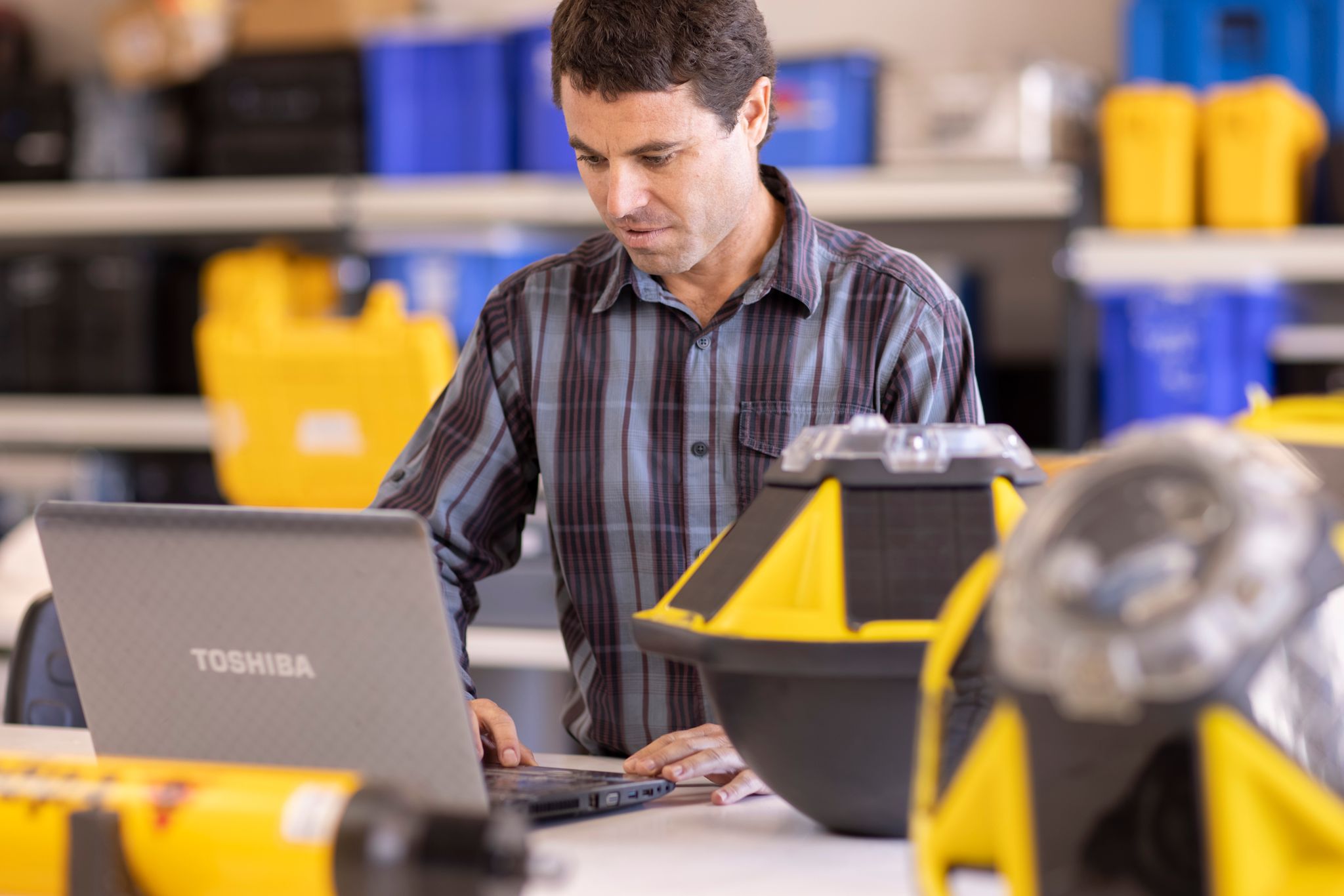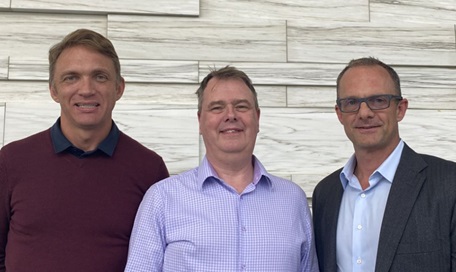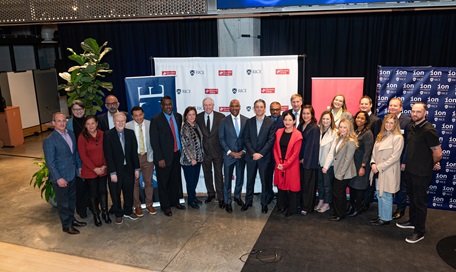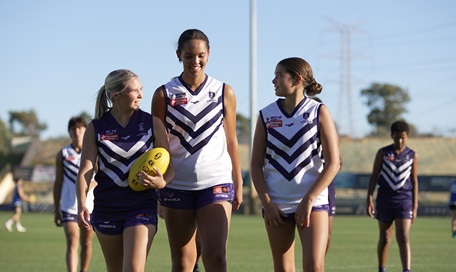Ocean wave
Woodside's collaboration with OceanWorks at the University of Western Australia
If you want to be inspired about the innovation we can harness from the ocean, both for energy and safety, Woodside’s collaboration with OceanWorks at the University of Western Australia (UWA) would be hard to beat.
The collaboration dates back to 2017 when Woodside became a foundation partner in OceanWorks, part of the Woodside FutureLab Network.
Since then OceanWorks has connected industry professionals with university researchers and students to solve engineering challenges for current and future offshore operations.
Read on for some exciting examples of the alliance’s work.
Buoys will be buoys
Did you know we have two drifting buoys along the coast of Western Australia (WA) measuring data on the ocean surface in real-time? This information has the potential to improve the accuracy of forecast swell amplitude and arrival time at our berths, critical for safe and efficient offtake operations.
The Swell-Local Adjustment via Monitoring (SLAM) project led by UWA’s Jeff Hansen captures data from these floating wave buoys to enhance model prediction of offshore sea conditions.
This project captured the super storm waves along 100 km of WA’s coast in 2020.
“With recent Perth storms causing many beaches to severely erode, the data from these buoys provided important information about how much energy from the ocean was impacting the coastline,” says Dr Hansen.
This is purely data-driven research, rather than using a physics-based approach to forecasting waves. The primary motivation for this project for Woodside is a more reliable forecasts of wave conditions at Mermaid Sound, off Dampier, north-west WA.
“We are hoping this machine-learning approach might lead to an enhanced version of the system we have,” explains Michael Garvey, Senior Metocean Engineer.
This is a low-expenditure, high-value project, which can provide several hours of early warning for an arriving swell or storm. Woodside is looking to deploy this forecasting system integrated into our new Elements Online web platform, which can be used anywhere using any device.
Pipe-loving critters
UWA’s Terry Griffiths and Marie- Lise Schläppy have led a series of OceanWorks projects on marine growth in offshore engineering contexts. Their latest results suggest that marine growth may have a surprising effect of stabilising pipelines.
They were able to demonstrate that marine growth has the potential to disrupt vortex- induced vibrations (VIV) for pipelines, eliminating the need for expansive span analysis and rectification procedures.
VIV is what can occur when a current goes past or around a pipeline and is caused by unsteady flow behind the pipe. It is similar to the effect that causes a flag to flap in the breeze.
Marine “critters” that live on pipelines or cables are called sessile epibenthic biota, and include barnacles, algae, mussels and the like.
This project showed that such critters could have a surprising benefit by changing the hydrodynamic profile of pipelines and acting as a stabiliser.
Dr Schläppy says by changing the way that marine organisms growing on offshore structures were considered, and by updating previous models, these changes could lead to huge savings in time and energy for offshore renewables as well as the oil and gas industry.
“We found that the fluffier the marine growth, the more it contributed to stabilising the pipe or cable and drastically reduced the intensity of vortex-shedding, which is the phenomena that causes vortex-induced vibrations that can rapidly cause pipe fatigue failure,” Mr Griffiths says.
Nino Fogliani, Development Manager New Business, says the OceanWorks collaboration brings together marine biologists, engineers and researchers in a way that enables communication and sharing of ideas.
Surf's up
Surfers aren’t the only ones who check out waves.
Understanding the ocean environment is a key to ensuring the safety, integrity and operability of our drilling campaigns.
One of the successes of FutureLab is the collaboration of UWA’s Professor Ian Milne and Senior Metocean Engineer Matthew Zed on improving the predictability of vessel responses to unpredictable ocean conditions.
They are part of a team behind a tool that has delivered significant improvements to the safety, integrity and operability of drilling campaigns.
Known as the Vessel Operability Planning Software (VOPS), it can determine the motion of a vessel directly from a full description of the ocean wave environment.
It’s a step change in the quality of information available to support decision-making which has seen rapid uptake of the tool in drilling campaign scheduling, rig selection, mooring optimisation and aviation.
“VOPS is a great demonstration of seamlessly commercialising the value from Woodside’s research investment through effective software development processes, enabling us to plan drilling operations with more confidence than ever before,” explains James Whelan, Senior Naval Architect and Woodside’s subject matter expert (SME) for vessel hydrodynamics.
Matthew adds: “VOPS delivers big improvements on the engineering methods previously employed.
“The result is safer and more reliable operational planning and it has been instrumental in realising significant savings to both schedule and rig configuration costs across our campaigns.
“It allows us to prepare for inclement weather and has now become a standard operational guidance tool for use in drilling campaigns globally.”
VOPS was developed in less than three months including one of the first full-scale validations against high-quality measurements from a drillship in the open ocean.
Professor Milne says the results were reviewed by industry and independent academic experts through presentations at the Offshore Technology Conference in 2018 and publication in Ocean Engineering in 2019.
“The next phase of the UWA FutureLab initiative, known as TIDE (Transforming energy Infrastructure through Digital Engineering), has targeted VOPS as a platform for continuous improvement for us to move forward over the five-year program,” he says.
Learn more about the initiative here.
Read the Q1 2021 edition of Trunkline here.




